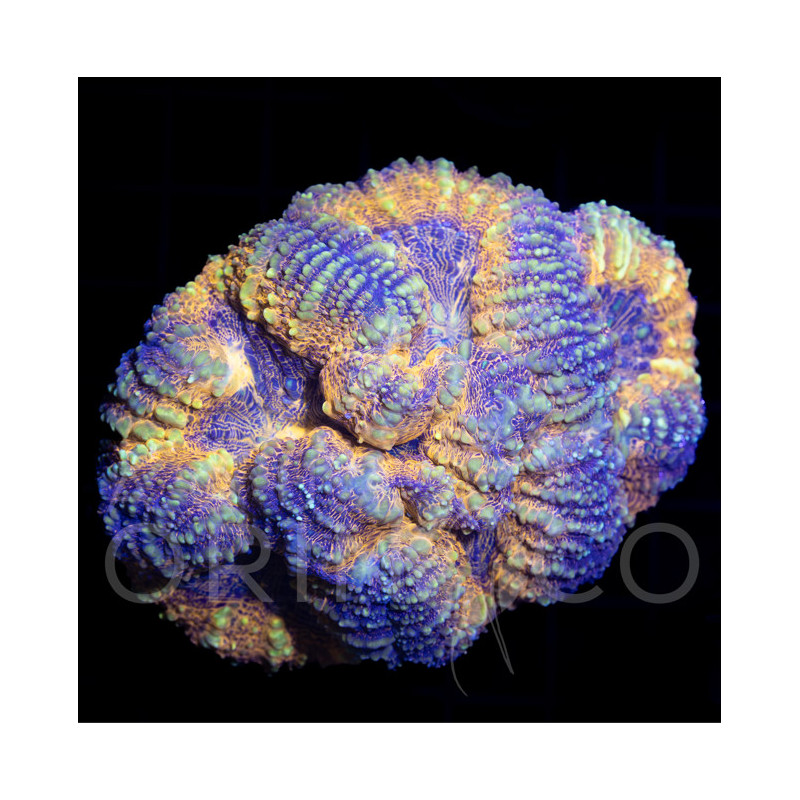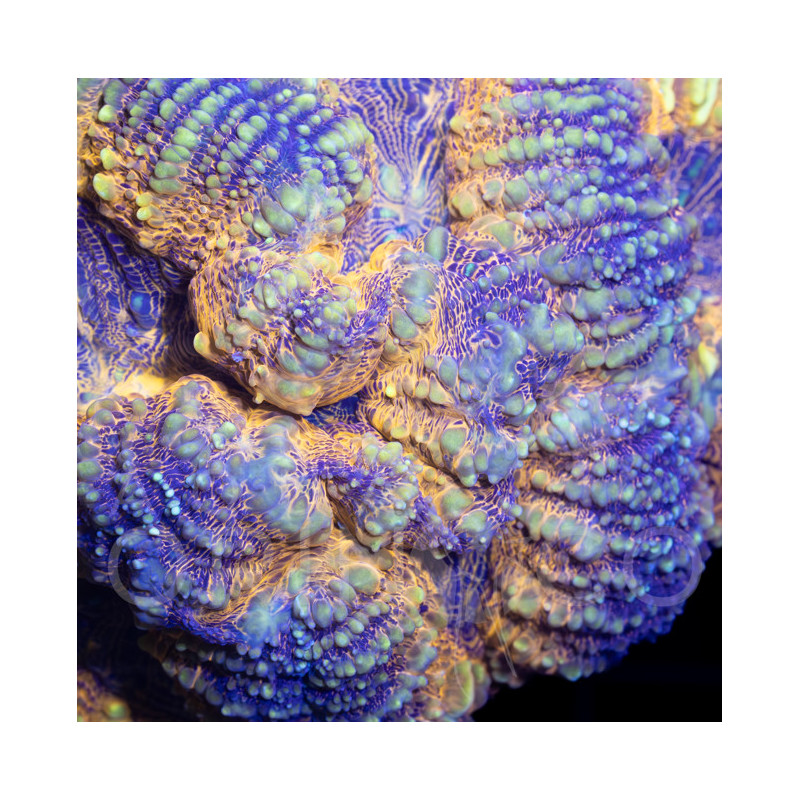More info
Acanthastrea echinata Tricolor
Peça única - "WYSIWYG"!
What You See Is What You Get
Acanthastrea echinata Coral Care
Acanthastrea as a genus got considerably smaller recently when the Acanthastrea lordhowensis got reclassified as a Micromussa lordhowensis. That leaves the echinata and bowerbanki as the most commonly seen species of Acans in the reef keeping hobby. Acanthastrea bowerbanki have the largest polyps of any Acans. These Acans do not have any special care requirements however they have a strong sting so it is advisable to give them plenty of space in your aquascape.
Please see below for additional care tips for Acans
Location
Acanthastrea are found around the islands of the Indopacific including Fiji, Tonga, Solomon Islands, and the Great Barrier Reef. Our Acanthastrea typically come from Australia.
Lighting
Acanthastrea can be kept under a variety of light conditions ranging from dim to medium-high lighting. Here we have them under very low light T5 bulbs and relatively low light LED's. It is important to note that these LPS change color dramatically depending on the light they are provided. Despite the change in appearance from light, it does not appear to affect the health of the coral, just the aesthetics.

Luz fraca |
A luz fraca é entre 30 - 50 PAR por unidade de área |

Luz média |
A luz média é entre 50 - 150 PAR por unidade de área |
|
Luz intensa |
A luz intensa é acima de 150 PAR por unidade de área |
Water Flow
We recommend keeping the coral in a low to medium flow area of the reef display. Too much flow could cause this particular species to become stressed and not extend fully. Lower flow also provides more opportunities for feeding which we feel is an important part of keeping Acans healthy.
Feeding
Acanthastrea in our opinion must be fed for long-term health. There are a variety of frozen fish foods available that make outstanding meals for Acans. We like to feed a mixture of meaty foods such as shrimp, fish, and squid with vitamin additives and highly unsaturated fatty acids (HUFA). Our Acans almost always have their feeding tentacles out (even during the daytime), which we view is a sign of good health.

A Word of Caution
It is important to note that this coral is aggressive to other Acans. They cannot be kept in contact with other types of Acanthastrea.







